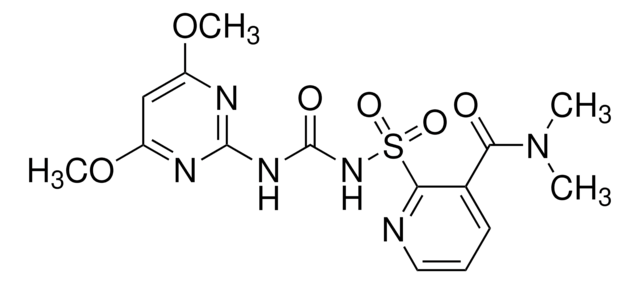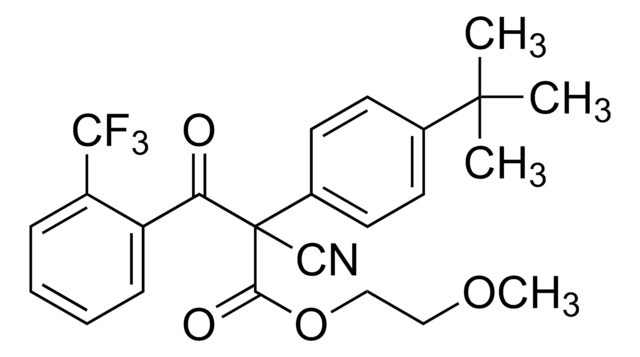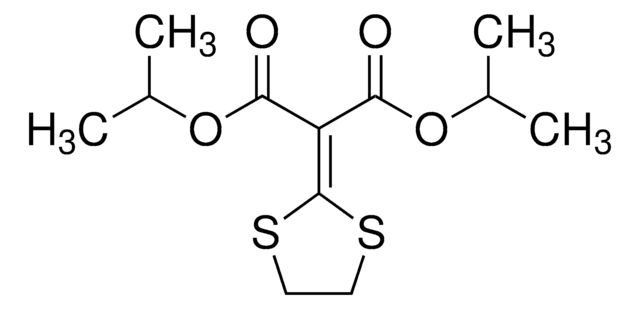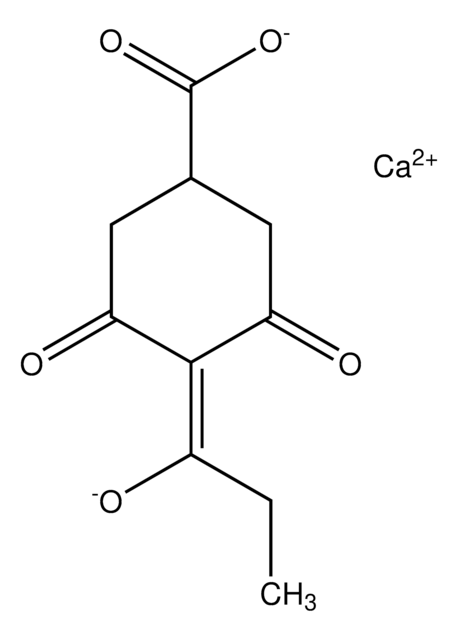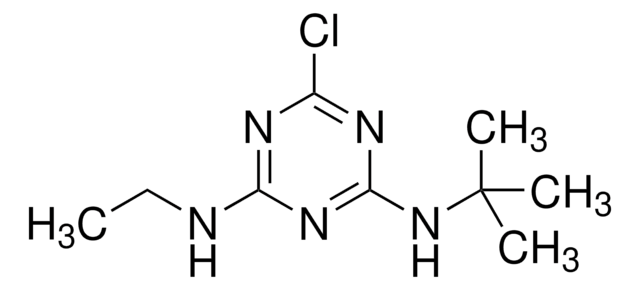45385
Chloridazon
PESTANAL®, analytical standard
Synonyme(s) :
Pyrazone
About This Item
Produits recommandés
Qualité
analytical standard
Niveau de qualité
Gamme de produits
PESTANAL®
Durée de conservation
limited shelf life, expiry date on the label
Technique(s)
HPLC: suitable
gas chromatography (GC): suitable
Application(s)
agriculture
environmental
Format
neat
Chaîne SMILES
NC1=C(Cl)C(=O)N(N=C1)c2ccccc2
InChI
1S/C10H8ClN3O/c11-9-8(12)6-13-14(10(9)15)7-4-2-1-3-5-7/h1-6H,12H2
Clé InChI
WYKYKTKDBLFHCY-UHFFFAOYSA-N
Vous recherchez des produits similaires ? Visite Guide de comparaison des produits
Catégories apparentées
Description générale
Application
- Food samples by nanoflow liquid chromatography coupled to high resolution mass spectrometry equipped with electrospray ionization (LC-ESI-HRMS).
- Honeybees by dispersive-solid phase extraction (d-SPE) along with liquid and gas chromatography coupled to tandem mass spectrometry (LC-MS/MS and GC-MS/MS) equipped with electron ionization (EI) source and multiple reaction monitoring (MRM) mode of detection.
- Human urine by LC-ESI-MS/MS with MRM detection.
- Fruits and vegetables by methanolic extraction and ultra-high performance liquid chromatography (UHPLC) combined with ESI-MS/MS operating under MRM mode of detection.
Informations légales
Mention d'avertissement
Warning
Mentions de danger
Conseils de prudence
Classification des risques
Acute Tox. 4 Oral - Aquatic Acute 1 - Aquatic Chronic 1 - Skin Sens. 1
Code de la classe de stockage
11 - Combustible Solids
Classe de danger pour l'eau (WGK)
WGK 2
Point d'éclair (°F)
Not applicable
Point d'éclair (°C)
Not applicable
Équipement de protection individuelle
dust mask type N95 (US), Eyeshields, Faceshields, Gloves
Choose from one of the most recent versions:
Déjà en possession de ce produit ?
Retrouvez la documentation relative aux produits que vous avez récemment achetés dans la Bibliothèque de documents.
Notre équipe de scientifiques dispose d'une expérience dans tous les secteurs de la recherche, notamment en sciences de la vie, science des matériaux, synthèse chimique, chromatographie, analyse et dans de nombreux autres domaines..
Contacter notre Service technique